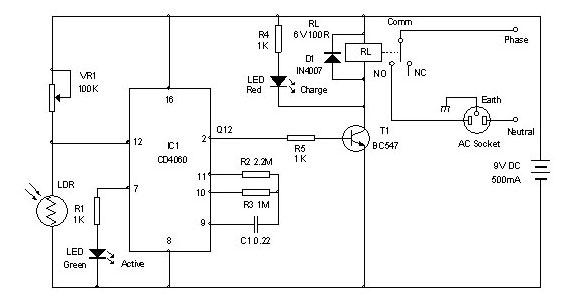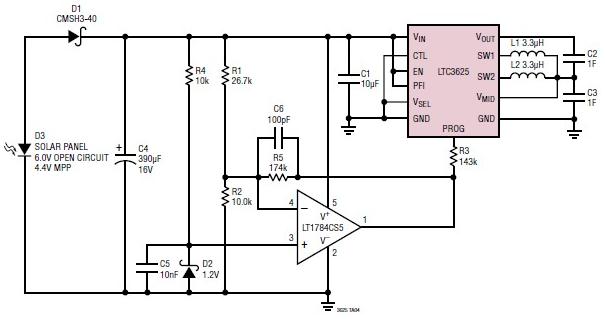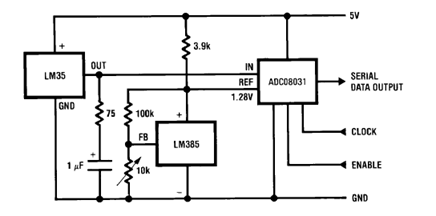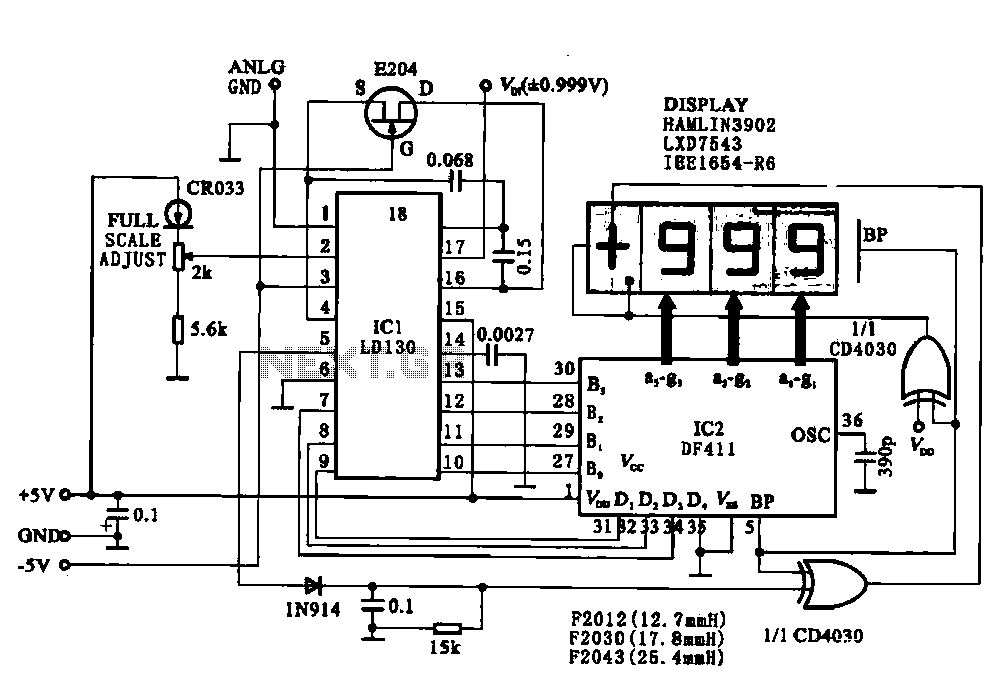
Battery Charger Display Using LT1639
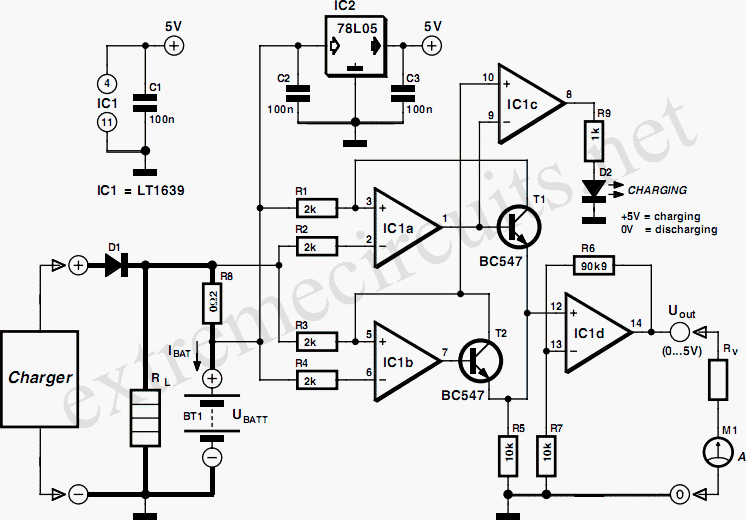
The Over-the-Top type of operational amplifier is ideal for use as a current sense for battery charger applications. The design described here can be used.
The Over-the-Top operational amplifier (op-amp) is specifically designed for applications requiring precise current sensing, particularly in battery charger systems. This op-amp configuration allows for accurate monitoring of current flow, which is critical for optimizing charging efficiency and ensuring battery longevity.
In a typical implementation, the op-amp can be connected in a differential configuration to measure the voltage drop across a shunt resistor placed in series with the battery charging circuit. This setup provides a proportional voltage output that corresponds to the current flowing through the shunt resistor. The gain of the op-amp can be adjusted using external resistors to match the desired sensitivity and range of current measurement.
To enhance performance, the op-amp may include features such as low offset voltage, high common-mode rejection ratio (CMRR), and wide bandwidth, which are essential for accurate and stable operation in dynamic charging environments. Additionally, incorporating feedback mechanisms can help maintain linearity and reduce distortion in the output signal.
For practical applications, the op-amp circuit may be integrated with a microcontroller or analog-to-digital converter (ADC) to facilitate real-time monitoring and control of the charging process. This integration enables the implementation of sophisticated charging algorithms that can adapt to varying battery conditions, ensuring optimal charging profiles and enhancing overall system efficiency.
In summary, the Over-the-Top operational amplifier serves as a vital component in battery charger designs, providing accurate current sensing capabilities that are essential for effective battery management.The Over-the-Top type of operational amplifier is ideal for use as a current sense for battery charger applications. The design described here can be used.. 🔗 External reference
The Over-the-Top operational amplifier (op-amp) is specifically designed for applications requiring precise current sensing, particularly in battery charger systems. This op-amp configuration allows for accurate monitoring of current flow, which is critical for optimizing charging efficiency and ensuring battery longevity.
In a typical implementation, the op-amp can be connected in a differential configuration to measure the voltage drop across a shunt resistor placed in series with the battery charging circuit. This setup provides a proportional voltage output that corresponds to the current flowing through the shunt resistor. The gain of the op-amp can be adjusted using external resistors to match the desired sensitivity and range of current measurement.
To enhance performance, the op-amp may include features such as low offset voltage, high common-mode rejection ratio (CMRR), and wide bandwidth, which are essential for accurate and stable operation in dynamic charging environments. Additionally, incorporating feedback mechanisms can help maintain linearity and reduce distortion in the output signal.
For practical applications, the op-amp circuit may be integrated with a microcontroller or analog-to-digital converter (ADC) to facilitate real-time monitoring and control of the charging process. This integration enables the implementation of sophisticated charging algorithms that can adapt to varying battery conditions, ensuring optimal charging profiles and enhancing overall system efficiency.
In summary, the Over-the-Top operational amplifier serves as a vital component in battery charger designs, providing accurate current sensing capabilities that are essential for effective battery management.The Over-the-Top type of operational amplifier is ideal for use as a current sense for battery charger applications. The design described here can be used.. 🔗 External reference
